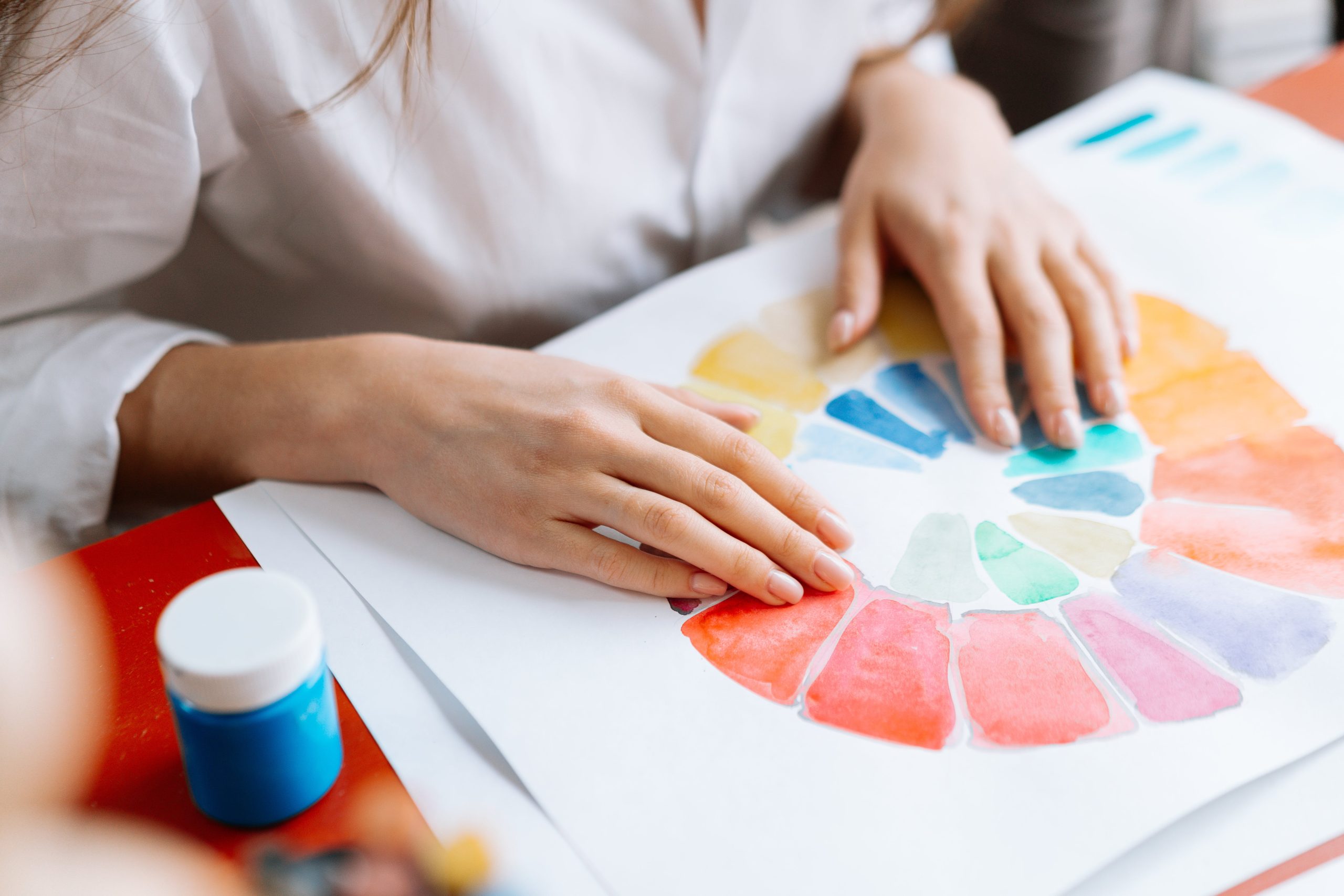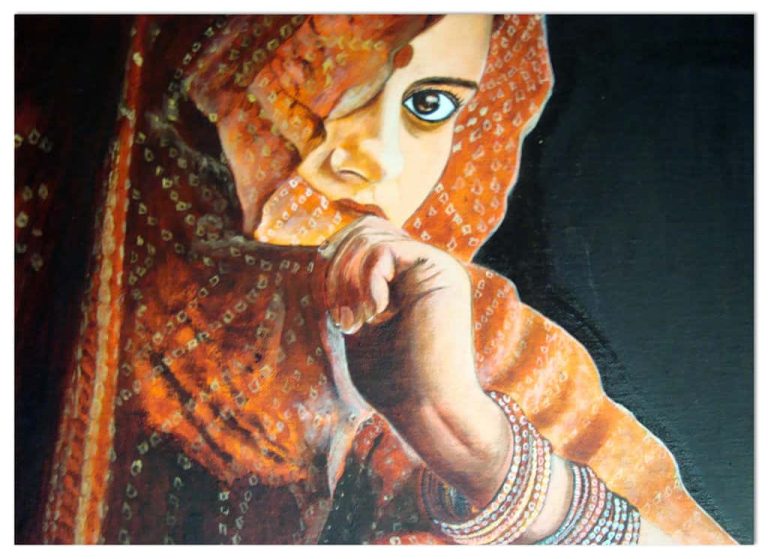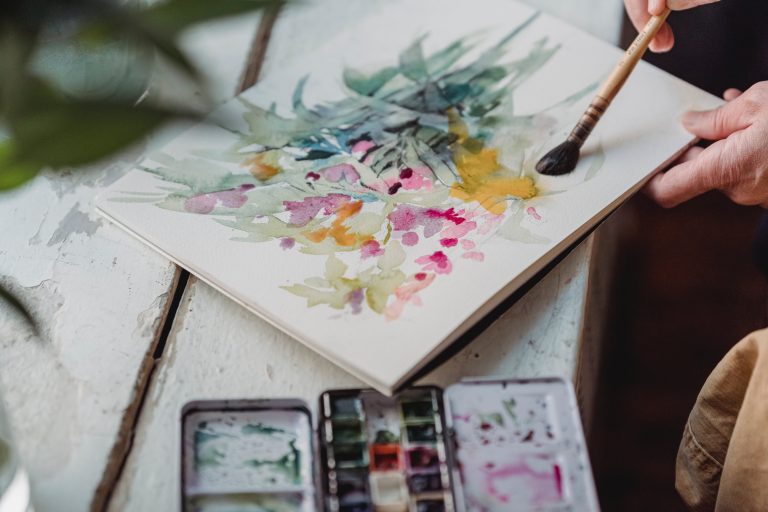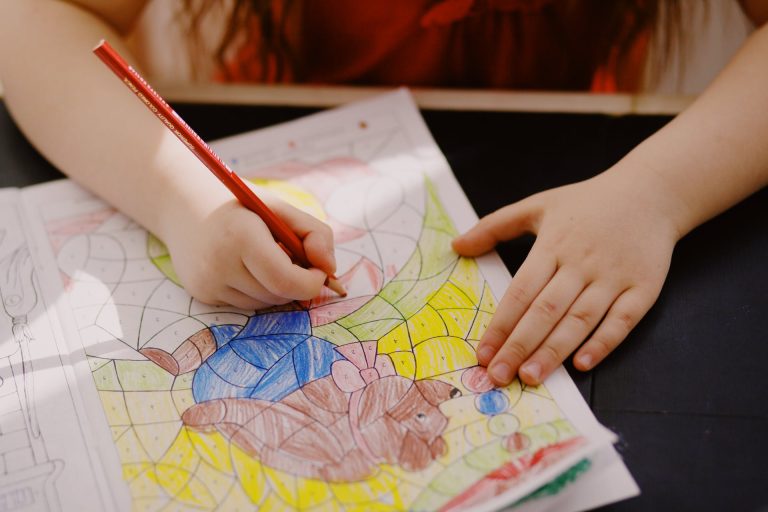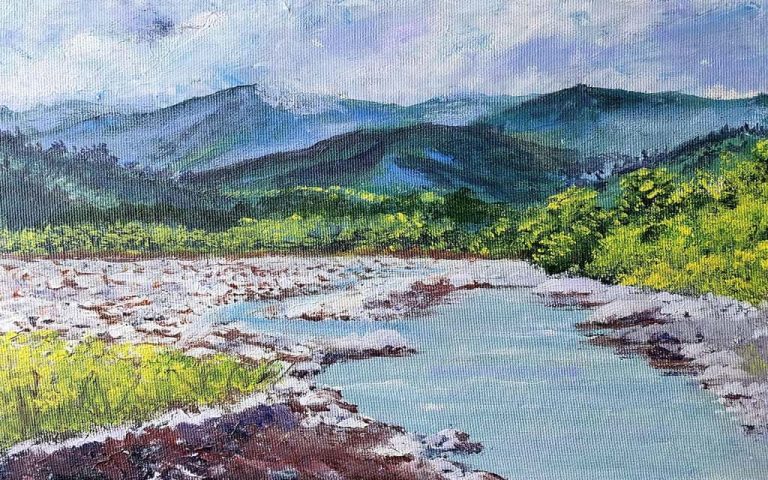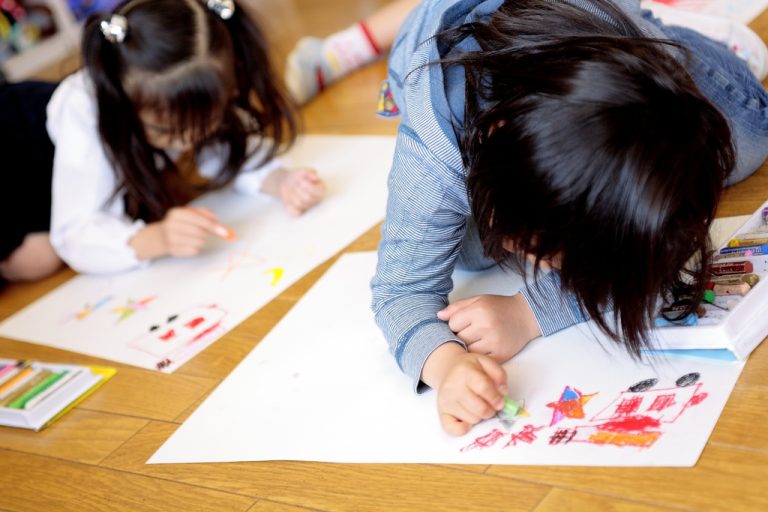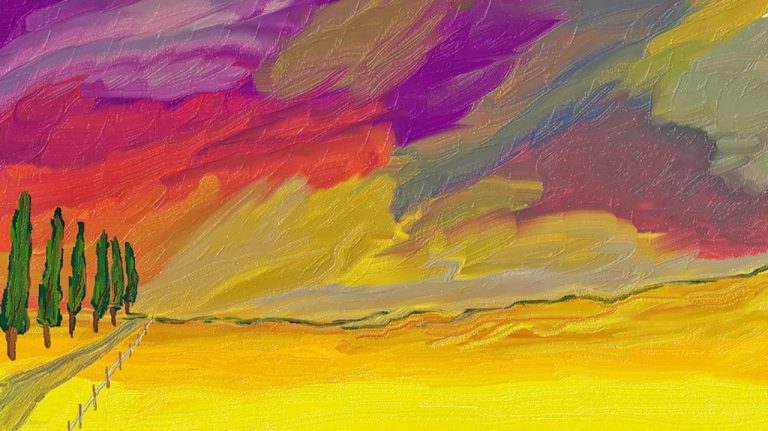Painting with watercolor is all about the water!
Watercolor paints are diluted in water and spread on watercolor paper. White forms the part of paper and this gives watercolor as only art medium whith unique set of characteristics. And in my opinion it’s what makes watercolor so darn appealing.
For a start, watercolor paints are transparent. The colored pigments in paint get diluted in water, which makes them liquid enough to spread across the paper. As the paint dries, the water evaporates and the colored pigments fix to the surface of the paper. The ratio of pigment to water has a direct effect on the transparency of your watercolors.
The more water you add, the more diluted and transparent the mixture becomes, and the lighter the tone of your brush marks. For dark tones it is higher concentration of pigment in your mixture (small amount of water). This is one of the first fundamentals of watercolor paint.
I’d like to introduce you to what I think are the fundamental basics of watercolors, so you can actually learn something useful and feel more confident in your skills.
SUPPLIES NEEDED
Watercolors:
Watercolors come in three different grades: children’s, student grade, and artist grade. I believe that the best watercolors for beginners are student grade.
Brushes:
When I want to paint with watercolor, I use soft and round brushes for detailing and flat brushes for wash.Soft brushes tend to soak up just the amount of water you need.
There are two types of watercolor brushes: one made with natural and other with synthetic hair. The former ones are more expensive but of course, they perform better. However, if you’re just a beginner, I’d suggest you get brushes with synthetic hair. They’re cheaper and will do the job just fine.
Watercolor papers:
Watercolor requires special paper because of absorbency. Watercolor paper essentially lets the paint sit on top of the paper until it dries rather than allowing the paint to spread out.
